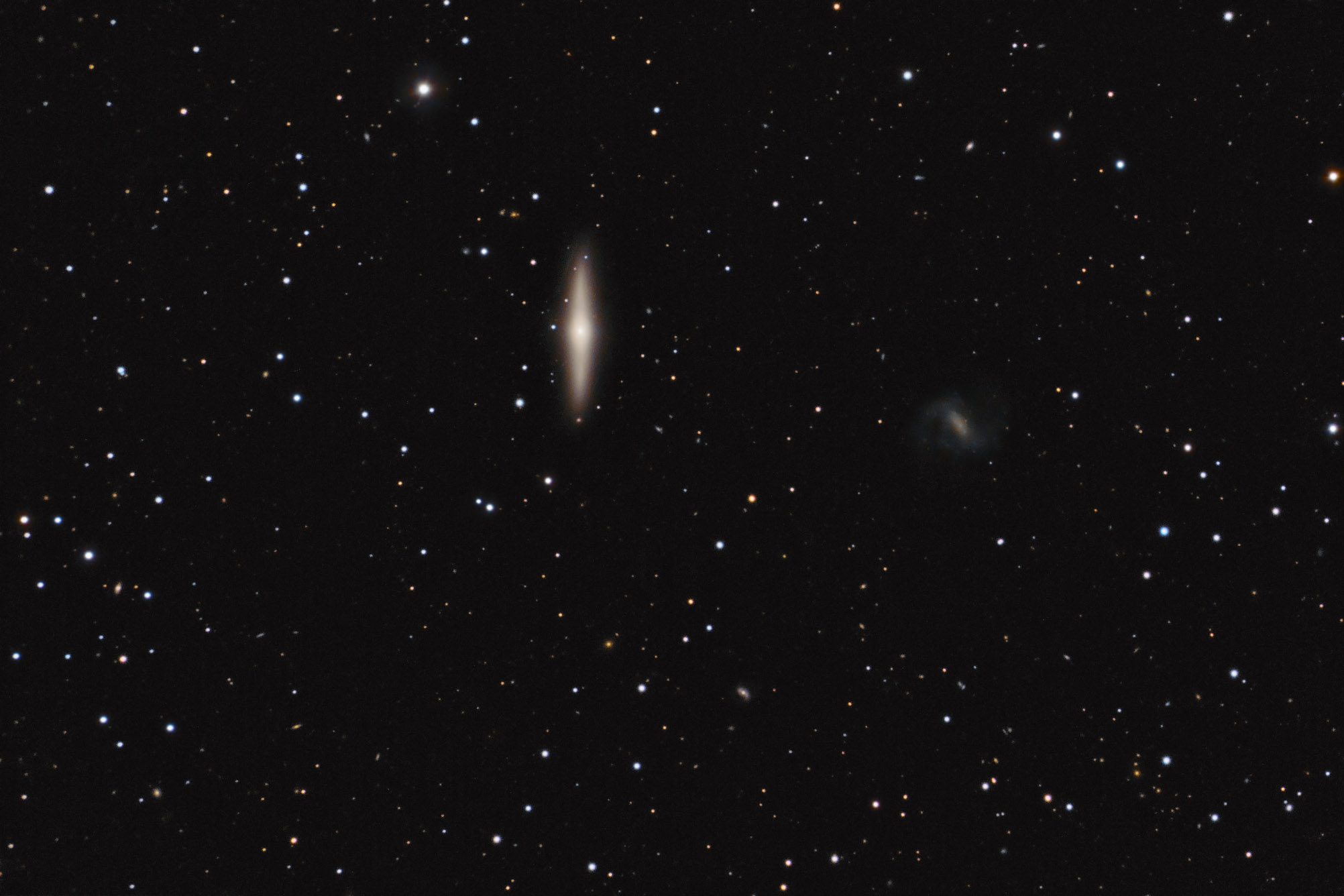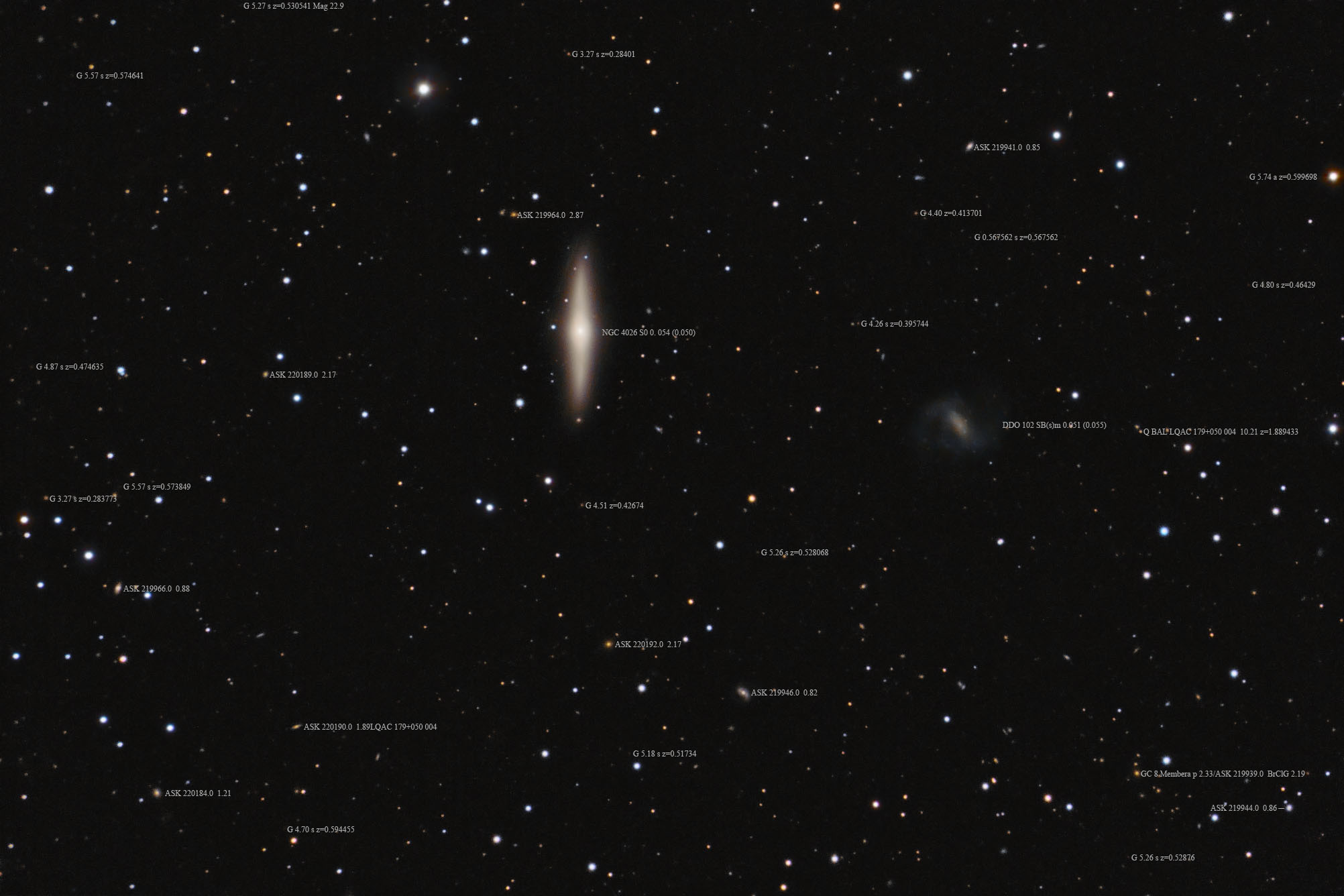| Description | Images |
Object name: NGC4026Designation(s): NGC4026, DDO102, This field attracted me as a study in the contrast between a high surface brightness galaxy and a very low surface brightness galaxy. Both are about 50 million light-years distant and are found in Ursa Major about a degree northwest of more famous Arp 18 (NGC 4088). They are considered members of the M109 galaxy group. NGC 4026 is an edge on S0 galaxy. Note that the intensity of the disk drops away from the core then brightens again before fading normally. This bright region may indicate a ring if seen face on. Is the ring due to dust hiding the inner parts of the disk or just a higher star population? Papers I saw disagree. A radio-based paper said it found no dust. Visual observations find dust. Maybe it is both. Certainly, I can't answer this from my image. Interestingly, older papers see this one as a hidden Sa spiral but newer ones all say S0. HI radio observations show an HI tail heading south from the galaxy. Its cause seems unknown as far as I could find. Did nearby DDO 102 have anything do do with this? I rather doubt it as its mass seems quite low but it may be dense with unseen dark matter and thus be able to cause a plume in NGC 4026. Some very low surface brightness galaxies have a lot more dark matter than their brightness would indicate though most don't seem to have enough to cause this plume. At least not to my way of thinking. Also, it doesn't point to DDO 102. It may be due to something it ate long ago. I found no paper trying to explain it, I'm just reporting it exists. Related Designation(s):2MASS J11592508+5057420, 2MASX J11592518+5057420, 2MASXi J1159251+505742, 2MFGC 09425, ASK 220191.0, BTS 071, CGCG 1156.8+5115, CGCG 269-029, CXO J115925.10+505742.3, DDO 102, DDO102, EON J179.855+50.962, GALEXASC J115925.05+505742.8 , HDCE 0706 NED027, LDCE 0867 NED061, LGG 258:[G93] 009, LGG 258:[G93] 033, LQAC 179+050 005, MCG +09-20-050, MCG +09-20-052, NGC 4026, NGC 4026:[L2011a] X0002, NGC4026, NSA 140528, NSA 140569, NSA 160825, PGC 037682, PGC 037760, SDSS J115825.59+505501.1, SDSS J115825.59+505501.2, SDSS J115825.59+505501.4, SDSS J115825.60+505501.1, SDSS J115825.60+505501.2, SSTSL2 J115925.12+505741.9, UGC 06956, UGC 06985, UMa Cluster:[PRL2014] U087, UMa Cluster:[PRL2014] U099, UZC J115925.1+505743, [M98j] 170 NED30, [RC2] A1155+51, |

